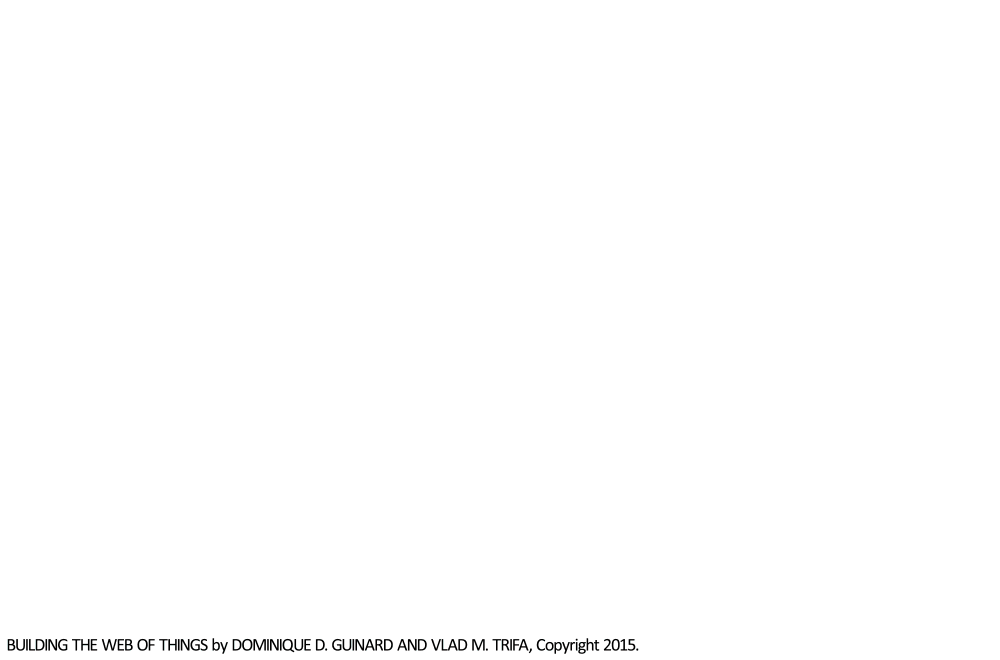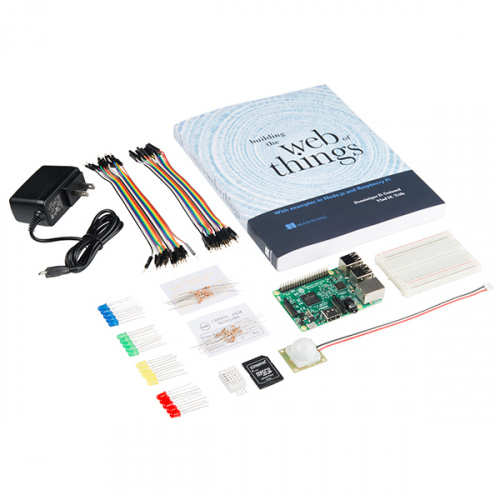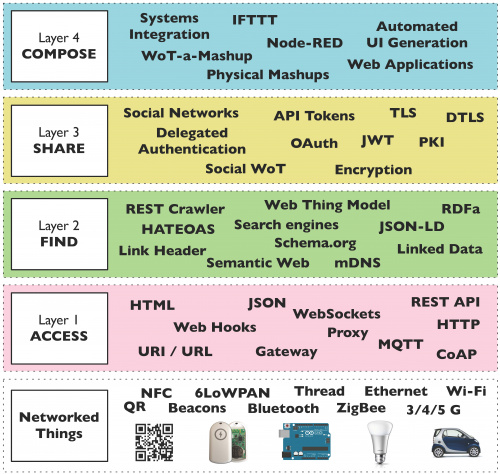This is a guest post from Vlad Trifa, cofounder and EVP of Research and Development of EVRYTHNG, a large-scale Web of Things cloud platform, and co-author of "Building the Web of Things," a guide to exploring the Internet of Things that happens to pair handily with the new Web of Things Kit.
We’re thrilled to announce that as of today, pre-orders for the Web of Things Kit are shipping, and the kit is now available for purchase!
Dom & I started working as researchers in the Internet of Things (IoT) space around 10 years ago, and very early on realized IoT is a growing collection of protocols, standards and tools that are generally incompatible with each other. In other words, IoT back in those days was a mess. And today… well… not much has changed.
That’s why we started very early – to explore how we could bridge those protocols and systems together in order to form a single, global-scale network of connected products made by any manufacturer. Similar to the World Wide Web, but with real-world objects or services instead of only multimedia documents - that’s the Web of Things.
We realized that instead of the many obscure and complex protocols used in IoT (DPWS, ZigBee, etc.), we could literally use the protocols and standards of the web - that is HTTP, HTML, JSON, and many others. Not only are web tools easier to understand and use, but we've also been using and improving them for 25 years; why not leverage all of this into communicating with physical objects and devices? That’s exactly the idea of the Web of Things, and over the last 10 years we’ve built and deployed numerous enterprise-grade IoT applications based on web standards.
After many months of hard work, we’ve managed to distill all the experience and knowledge we accumulated into a single book, “Building the Web of Things”. This book is the most comprehensive guide to date about how to use cutting-edge web technologies to build IoT applications, products and services.
After giving you a solid overview of the wide IoT ecosystem, you will rapidly understand how you can implement scalable, flexible and interoperable web-connected products using Node.js and many embedded systems. Here’s a short list of all the things you’ll learn about in no time:
- IoT networking protocols and embedded devices
- Connecting electronic actuators and sensors (GPIO) to a Raspberry Pi
- Implementing standard REST and Pub/Sub APIs with Node.js on embedded systems
- Using IoT application protocols like MQTT and CoAP and integrating them to the Web of Things
- Using the Semantic Web (JSON-LD, RDFa, etc.) to discover and find Web Things
- Sharing Things via Social Networks to create the Social Web of Things
- Building a web-based smart home with HTTP and WebSocket
- Composing physical mashups with EVRYTHNG, Node-RED, and IFTTT
And because the Web of Things is cooler when it is filled with things, we’ve worked together with SparkFun to prepare a complete Web of Things starter kit with all the elements (sensors, cable, LEDs and especially the brand new Raspberry Pi 3) you’ll need to work through the book and shortcut your way to mastering the latest trends and techniques in building real-world IoT solutions.
If you’re not yet sure about this, the first two chapters of the book are freely available here and you’ll even have the opportunity to interact with a real web-connected device in London and build an app to control it!










Hi,
I was wondering, What are the prerequisites (for example: previous experience on C programming) before trying to study this book?
Thanks for the help!
The link for the two free chapters is broken. Looks like the page is encoding it as a local link instead of a remote link. https://www.sparkfun.com/news/bit.ly/wotbook
Right you are -- should be fixed now, thanks!